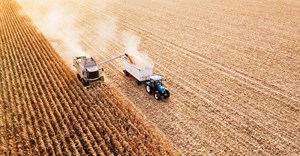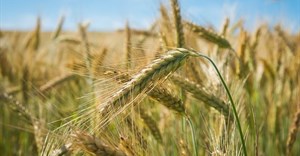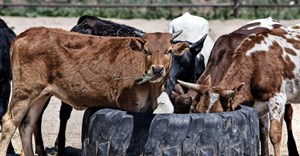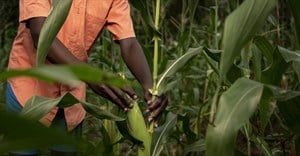Subscribe & Follow
Trending





 Vicinity Media: How we use DOOH in our retail solutionSharné Daniels, Chanté Naidoo & Olav Westphal
Vicinity Media: How we use DOOH in our retail solutionSharné Daniels, Chanté Naidoo & Olav Westphal
Jobs
The maize price, risk and insurance
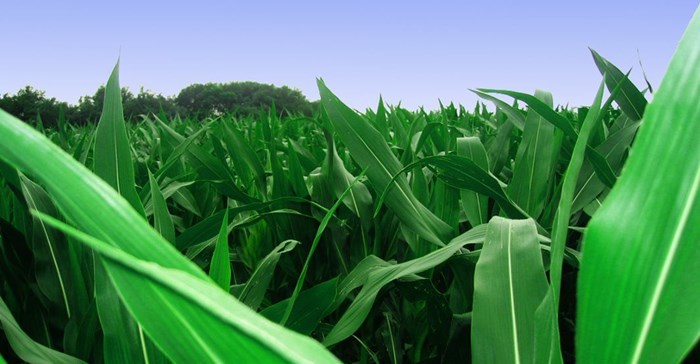
"Especially to the west of the county, which has seen very late plantings, there is a risk of frost damage and as we know, early frost can cause considerable damage. The actual size of the crop will depend on how this risk plays out," says Maree.
Discussions relating to the grain industry and markets are fraught with various uncertainties but Maree says most of these uncertainties will be resolved within the next few months. “We will know how much damage the frost has caused, if any; there will be greater certainty about the exchange rate after the election; we’ll have more information about the international grain scenario; and the harvest will be in full swing in some regions.”
Gripes in the industry
Maree says the grain industry is in a difficult position. "Since the 2015/16 drought, the industry has been on the path to recovery, although it’s been severely hampered by several factors. Relatively low prices, attributed to good harvests in the 2016/17 and 2017/18 seasons, and rising input costs are putting a definite damper on the speed of recovery. The grain farmer’s cost squeeze is negative, which also constrains financing ability in the long run."
Maree explains that banks keep these factors in mind when considering financing. "We finance farmers based on the farm’s cash flow and the security the business can offer, for example in the form of land. It may not seem as though the factors mentioned affect financing decisions directly, but it does have an impact.
"Remember, these factors affect maize price expectations, which obviously impact on farming enterprises’ cash flow and repayment abilities. The large transfer stock and reasonable crop estimate are placing downward pressure on the maize price. When this price is used in the cash flow analysis, it negatively affects the calculation. We are reducing the price even further to ensure that if the price drops lower, farmers can remain profitable while meeting their repayment obligations," explains Maree.
Despite this scenario, Maree is hopeful about the grain industry. "It all depends on the farmer’s cost structures. We encourage farmers to look closely at their cost structures and yield expectations. The difficult circumstances currently experienced mean that production decisions must be carefully considered. Diversification, especially with livestock, is also very important for sustained profitability. There have been many instances where diversification saved a farm."
Additional expectations for the season might include a move to a break-even point in terms of maize stocks. "This will be realised if we have a normal harvest this season. A break-even point will put upward pressure on the maize price, which in my opinion will encourage producers to plant in the next season," adds Maree.
Risk distribution
Risk is synonymous with farming, and in the grain industry, it is even higher, considering current conditions. "It is, unfortunately, true that the farmer must carry most of the risk. Banks have a small shared risk, as some debts will have to be written off in extreme cases where farmers go bankrupt. Yet the farmer’s risk remains the greatest."
Banks aim to keep the farmer on the farm and in production for as long as possible. "That is what farmers do best – it’s good for the farmer, for the bank and for the economy."
According to Maree, crop insurance is one of the biggest obstacles in the grain industry. "For example, in the US grain industry, 50% of producers’ crop insurance premiums are subsidised by the state. It means the producer carries less risk and lower costs."
He believes such a subsidy is becoming vital for the grain industry in South Africa, one of the few countries that have no such subsidies in operation. "Crop insurance is becoming too expensive for many producers and given the negative cost squeeze and high risk in the grain industry, insurance companies are also becoming reluctant to prescribe multi-risk protection. A proper plan is therefore essential."
A message from the bank
"What I would really like to communicate to farmers is that they should talk to their bank earlier, rather than later, if they suspect there may be trouble ahead. When all is said and done there is little we can do – if addressed earlier, intervention may still be possible."
Source: AgriOrbit

AgriOrbit is a product of Centurion-based agricultural magazine publisher Plaas Media. Plaas Media is an independent agricultural media house. It is the only South African agricultural media house to offer a true 360-degree media offering to role-players in agriculture. Its entire portfolio is based on sound content of a scientific and semi-scientific nature.
Go to: http://agriorbit.com/

